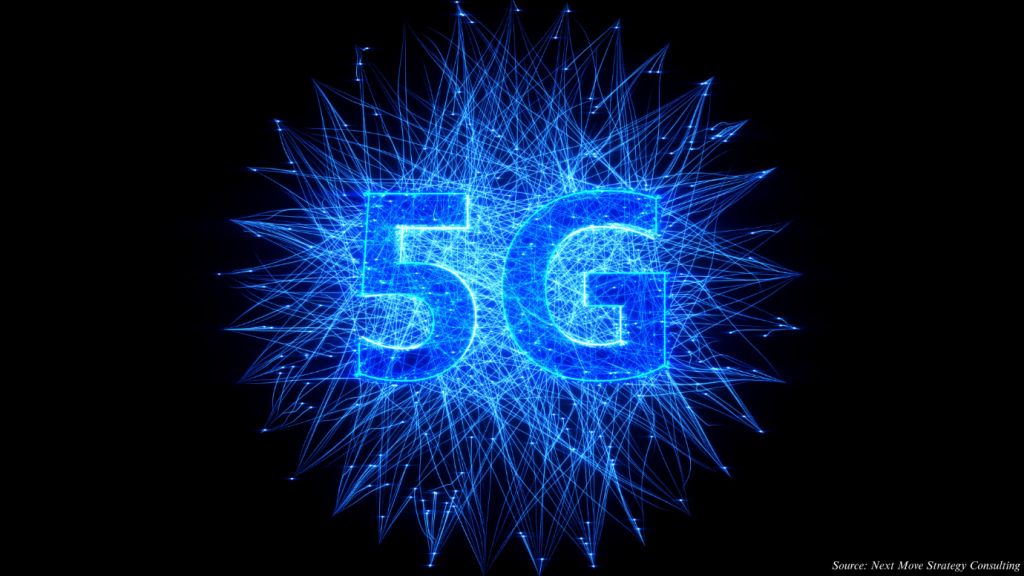
The 5G Technology Market is booming, transforming how we connect, communicate, and innovate. From lightning-fast mobile networks to cutting-edge applications like remote surgery and smart cities, 5G is reshaping industries. The sector is projected to reach USD 620.72 billion by 2030, with a growing CAGR of 58.6%.
But what’s fueling this growth, and where is it headed? Let’s dive into the trends, innovations, and challenges defining the 5G landscape in 2024 and 2025, based on credible insights from recent developments.
Why Is 5G Technology Gaining Momentum?
The 5G technology market is surging due to increasing demand for high-speed, low-latency connectivity. Consumers and industries alike are pushing for faster data transfer to support applications like augmented reality (AR), virtual reality (VR), and the Internet of Things (IoT). Governments and telecom giants are investing heavily to meet this demand, especially in regions like India and China.
Key Drivers of 5G Growth
- Rising Smartphone Penetration: Affordable 5G-enabled devices, such as the Samsung Galaxy S25 FE launched in India, are driving adoption. Priced competitively, this device offers advanced 5G capabilities, making high-speed connectivity accessible to more users.
- Infrastructure Expansion: China’s Ministry of Industry and Information Technology (MIIT) and the State Administration for Market Regulation plan to boost supply of next-gen equipment, drive 5G/6G breakthroughs, and advance 6G research. By 2026, digital information manufacturing in five provinces is expected to top 1 trillion yuan, with the server industry exceeding 400 billion yuan and PCs and mobile phones moving toward higher intelligence and premiumization.
- Innovative Applications: Emerging technologies like 6G, with chip prototypes delivering speeds 10 times faster than 5G, are laying the groundwork for next-generation connectivity and will likely influence future 5G and 6G development.
The 5G technology market is thriving due to affordable devices, massive infrastructure investments, and the push for next-generation applications. These factors are setting the stage for widespread adoption across consumer and industrial sectors.
How Are New Devices Shaping the 5G Market?
The launch of 5G-enabled smartphones, like the Samsung Galaxy S25 FE in India, is a game-changer. Released in 2025, this device targets consumers while delivering premium 5G performance. The Galaxy S25 FE 5G is powered by the Exynos 2400 chip paired with 8GB of RAM and up to 512GB of internal storage.
For a smooth performance, it features a larger vapour cooling system with liquid thermal, offering improved thermal performance. It is also known for its signature triple camera setup that includes a 50MP main camera, a 12MP ultrawide camera, and an 8MP telephoto lens with 3x optical zoom. It also features a 12MP selfie camera, an upgrade from Galaxy S24 FE’s 10MP selfie camera. Lastly, the smartphone is backed by an upgraded 4900mAh battery that supports 45W fast wired charging.
Impact of 5G Smartphones
- Affordability Drives Adoption: The Samsung Galaxy S25 FE’s competitive pricing makes 5G accessible to a broader audience in India, a key growth market.
- Enhanced Features: Devices with 5G support offer faster downloads, seamless streaming, and improved gaming experiences, appealing to tech-savvy users.
- Market Expansion: The availability of 5G smartphones fuels demand for 5G networks, encouraging telecom operators to expand infrastructure.
New 5G devices like the Samsung Galaxy S25 FE are lowering barriers to entry, boosting consumer adoption, and driving demand for robust 5G networks.
What Role Does Infrastructure Play in 5G Expansion?
Infrastructure is the backbone of the 5G technology market. Without widespread base stations and advanced chipsets, 5G’s potential remains untapped. China closed 2024 with 4.19 million 5G base stations in operation, achieving nationwide village-level coverage. The number is set to rise by over 300,000 to reach 4.5 million by the end of 2025, MIIT announced at its annual work conference in Beijing. For comparison, U.S. operators had only about 270,000 5G base stations in total by early 2024.
Infrastructure Developments
- Base Station Growth: China’s Ministry of Industry and Information Technology (MIIT) reports that 90% of mobile subscriptions in China will be on 5G networks by 2030, driven by extensive base station deployments.
- Chipset Innovations: Research into 6G chips, which achieve speeds 10 times faster than 5G, is expected to influence future 5G and 6G chipset innovations, improving efficiency and performance.
- Global Competition: Countries like India are expanding 5G networks, with telecom operators accelerating coverage to meet rising demand.
Massive infrastructure investments, particularly in base stations and chipsets, are critical to scaling 5G networks and meeting global connectivity demands.
What Challenges Are Slowing 5G Adoption?
Despite its promise, the 5G market faces hurdles. High deployment costs, regulatory challenges, and technological limitations pose significant barriers, particularly in developing regions.
Key Challenges
- Cost of Deployment: Building 5G infrastructure, such as base stations, requires substantial capital. China’s investment in 4.5 million base stations by 2025 highlights the financial scale involved.
- Technological Gaps: While 6G chip research shows potential for ultra-fast connectivity, current 5G networks still struggle with coverage in rural areas.
- Regulatory Hurdles: Securing rights-of-way for laying fiber-optic cables often faces legal and regulatory challenges. Negotiations with landowners and environmental considerations can cause delays and raise project costs.
High costs, technological limitations, and regulatory complexities are slowing 5G adoption, but ongoing investments are addressing these challenges.
How Will 5G Evolve by the End of 2025?
Looking ahead, the 5G market is poised for significant growth. Innovations in chip design and infrastructure expansion will drive adoption, while emerging applications will unlock new opportunities.
Future Trends
- Wider Device Availability: Devices like the Samsung Galaxy S25 FE will continue to make 5G accessible, especially in markets like India.
- Infrastructure Milestones: China’s target of 4.5 million base stations by 2025 will solidify its position as a 5G leader.
- 6G Influence: Advances in 6G chip technology will enhance 5G performance, paving the way for faster, more efficient networks.
By 2025, expect broader device adoption, expanded infrastructure, and technological advancements influenced by 6G research to propel the 5G market forward.
Conclusion: Why 5G Matters Now
The 5G technology market is at a pivotal moment. Affordable devices, massive infrastructure investments, and cutting-edge innovations are driving growth, while challenges like cost and coverage gaps remain. As countries like China and India lead the charge, 5G is set to redefine connectivity by 2025, paving the way for a smarter, faster world.
About the Author

Sneha Chakraborty is a seasoned SEO Executive and Content Writer with over 4 years of experience in the digital marketing space, bringing a strong command of online visibility strategies and a keen insight into the evolving digital landscape. She specializes in enhancing online visibility and user engagement through data-driven strategies and creative content solutions. Sneha is passionate about translating complex digital concepts into accessible content for a wide audience. Outside of work, she enjoys reading, sketching, and exploring the outdoors through nature photography. The author can be reached at [email protected].


